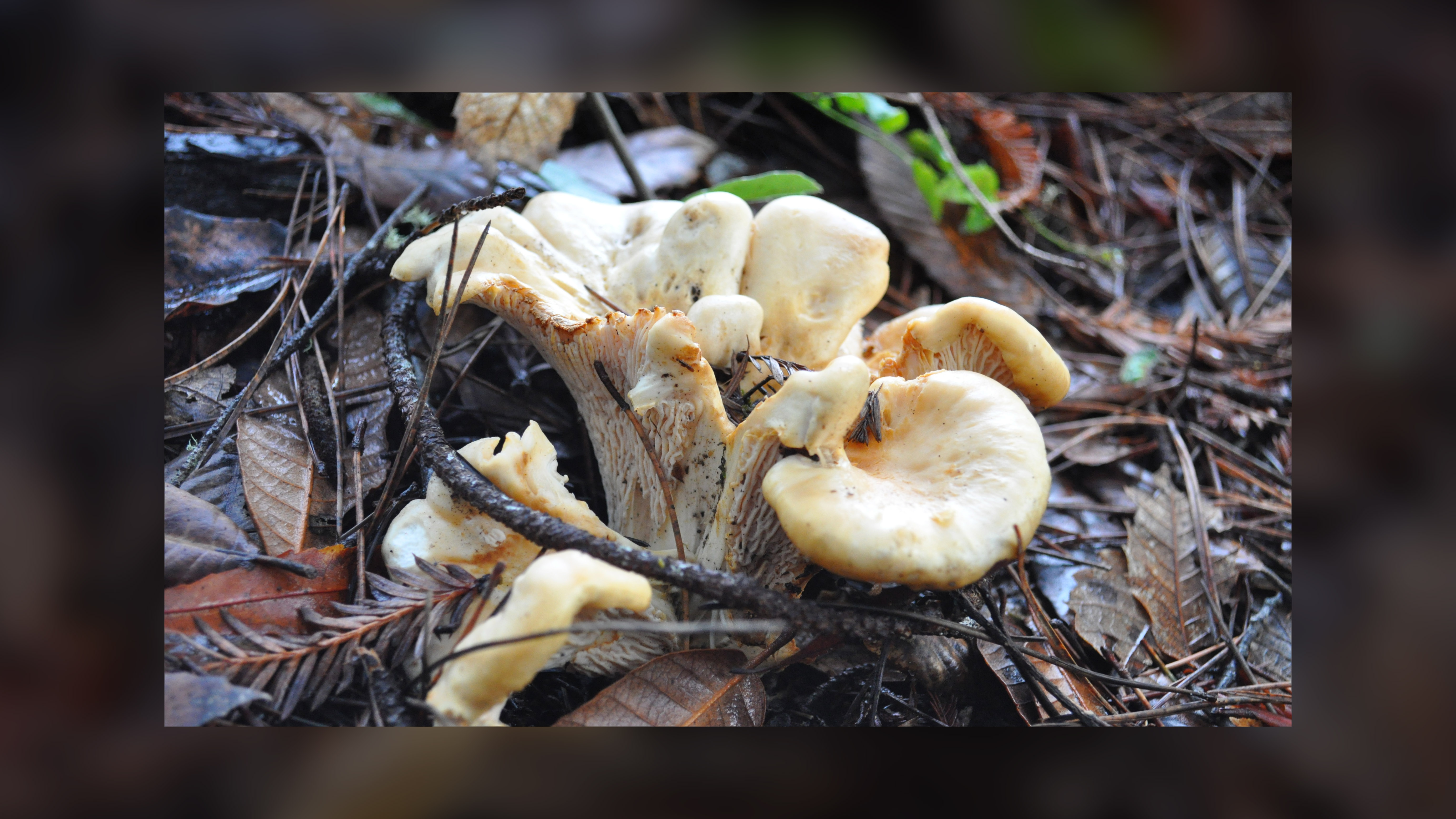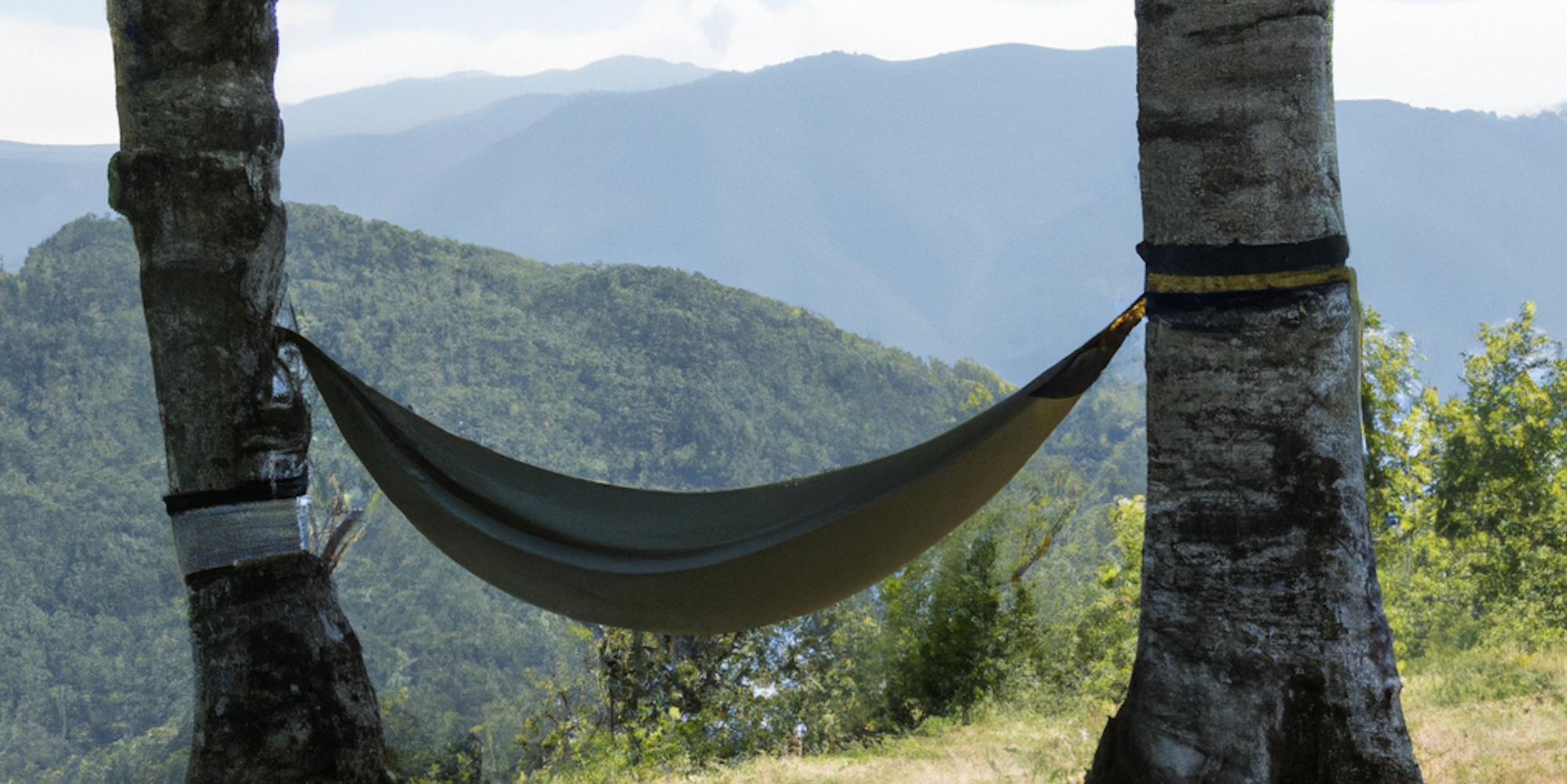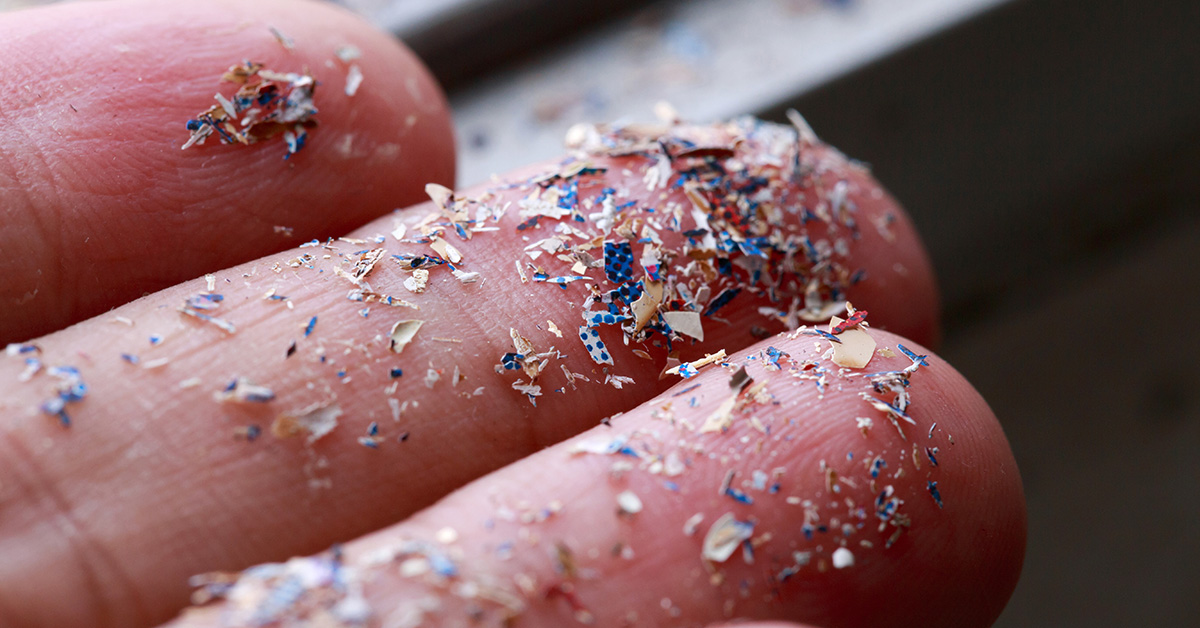Table of Contents

Foraging Chanterelle Mushrooms in the Southeast
A highly sought-after wild mushroom, the chanterelle is top on all foragers’ lists of edible mushrooms. These golden gems are the treasure of the forest, popping up under trees and along forest floors. There are around 90 types of chanterelle, all with specific geographic ranges and growing preferences. North American chanterelle species are still being discovered and redefined; a new species of chanterelle was found in the Southeast in 2011! Keep your eyes peeled; you never know what treasures the forests are holding. Foraging chanterelles isn’t complicated, but it requires close attention to weather conditions and a little knowledge about trees and terrains.
What Is a Chanterelle?
Chanterelles are a delicious, edible mushroom with a light, fruity flavor and dense, meaty texture. Most chanterelle fungi are golden-yellow, but there are also white, pink, and peach colorations. The name chanterelle is from the Greek world kantharos, which means cup or tankard. It is an apt name since most chanterelle mushrooms become indented in the center as they age, creating a cup or funnel shape.
Basics of Foraging Chanterelles
Chanterelles are mycorrhizal, which means they form relationships with specific plants and trees and will only grow in conjunction with them. They also grow in the same location year after year, so when you find them, mark the spot! To find chanterelles, you need to understand and study the aspects of each type and seek out those terrains.
Mid-summer and early fall (June-September) are the best time to look for chanterelles. However, this season is highly dependent on Mother Nature. If there aren’t enough rains, the season may be short, lacking, or even nonexistent. Mushroom foraging isn’t just about learning the individual species; a forager quickly becomes a weather, climate, tree, and terrain expert!
The best time to look for chanterelles is several days after heavy rain. Chanterelles like hot, humid days that follow a good rainfall. Wait a few days after the rain to give the little gems time to fruit. Don’t wait too long, though, because they also quickly deteriorate or get invaded by bugs. Chanterelles grow in spurts following the rains. During severe droughts, they won’t fruit at all.
Chanterelles grow in colonies; if you forage lightly and treat the patch well, it will bring flushes of mushrooms for many years. Never pick an entire patch as this will hurt the colony and reduce production in the following years. Practice sustainable foraging to enjoy the fruits of the forest for years, not just for you but for generations to come.
How To Identify Chanterelles
The most straightforward identification feature is the gills or lack thereof. Chanterelle stems are lined with false gills. It is essential that you understand the difference between false gills and true gills. This is the primary identification point that differentiates chanterelles from some common poisonous look-a-likes. Do some research to make sure you are comfortable with the difference. Once you know it, it is easy to see. However, it is a common point of confusion with beginner foragers.
False gills are forked folds that start underneath the cap and run down the stem. They are not easily removed from the cap or stem without damaging the mushroom. True gills look more like blades – common button mushrooms are an excellent example of true gills. If you look at the two gill types side by side, you’ll see the difference.
The entire body of the chanterelle is usually the same color, either all yellow, orange, peach, dull brown, or white, depending on the species. Caps are smooth, and there are no rings or markings on the stem except for the false gills. Chanterelle caps are vase or funnel-shaped, usually with a noticeable indent in the center. These fungi grow individually on the ground, rarely in clumps or overlapping clusters. Chanterelles do grow in large patches, but each one will be solitary. They never grow on trees, stumps, or wood.
Most chanterelles have a very distinctive fruity scent, which most people say is reminiscent of apricots. This varies by species and environment, with some having a more distinct smell than others. If you’re walking through the woods and suddenly get a strong whiff of apricots, it’s likely there’s a nice chanterelle patch nearby!
Southeastern Chanterelle Species
-
Smooth Chanterelle (Cantharellus lateritius) – Deep golden-yellow orange caps, sometimes wavy at the edges. Caps are often only slightly indented or somewhat flattened. Grows in relation to hardwoods, most often oaks. Has a preference for growing up sloping creek banks. Large fruiting bodies, averaging 10-12cm tall and 8 cm across. Stem is stout, thick, and solid. The false gills are lighter orange than the cap. White or pale yellow flesh and apricot scented. This is the classic highly sought-after chanterelle.
-
Cantharellus appalachensis – Small chanterelle with a dull yellow-brown cap, yellowish gills, and yellow-brown stem. Grows in mixed hardwood and conifer forests, preferring oaks. Caps often have wavy margins, and stems are generally hollow towards the base. White flesh and apricot scented.
-
Cantharellus cinnabarinus – Distinctive flamingo pink to red coloring; a small chanterelle species. Grows among hardwoods, specifically beech, oak, aspen, and hickory. Cap is only slightly indented or primarily flat. Stem is thick with blotched pink coloring. White flesh, sweet scent.
-
Cantharellus lewisii – The species discovered in 2011. Grows in relation with floodplain hardwoods, most often oaks. Dark orange-brown caps with lighter yellowish colored false gills and stem.
Why Are Chanterelles So Special?
So far, chanterelles cannot be grown commercially. This limits their availability and increases their desirability. The only way to have chanterelles is by foraging them. Because of this, chanterelles are one of the top 5 most expensive mushrooms in the world.
Chanterelle Look-A-Likes
-
Jack O Lantern (Omphalotus olearius) – This is not one you want to get confused about. Jack o’lanterns won’t kill you, but you will get very sick. Jack o’lanterns have true gills and grow in large, overlapping clumps. This is why it is so important to know the difference between true and false gills. They are also very orange and generally significantly bigger than chanterelles.
-
False Chanterelle (Hygrophoropsis aurantiaca) – Aptly named, the false chanterelle looks very much like its namesake. Thankfully, it isn’t poisonous, although it isn’t one that you’d want to eat. The main difference, again, is the gills. False Chanterelles have true gills. They are also much more orange than a chanterelle, and the center of the cap is darker orange than the rest of the mushroom.


